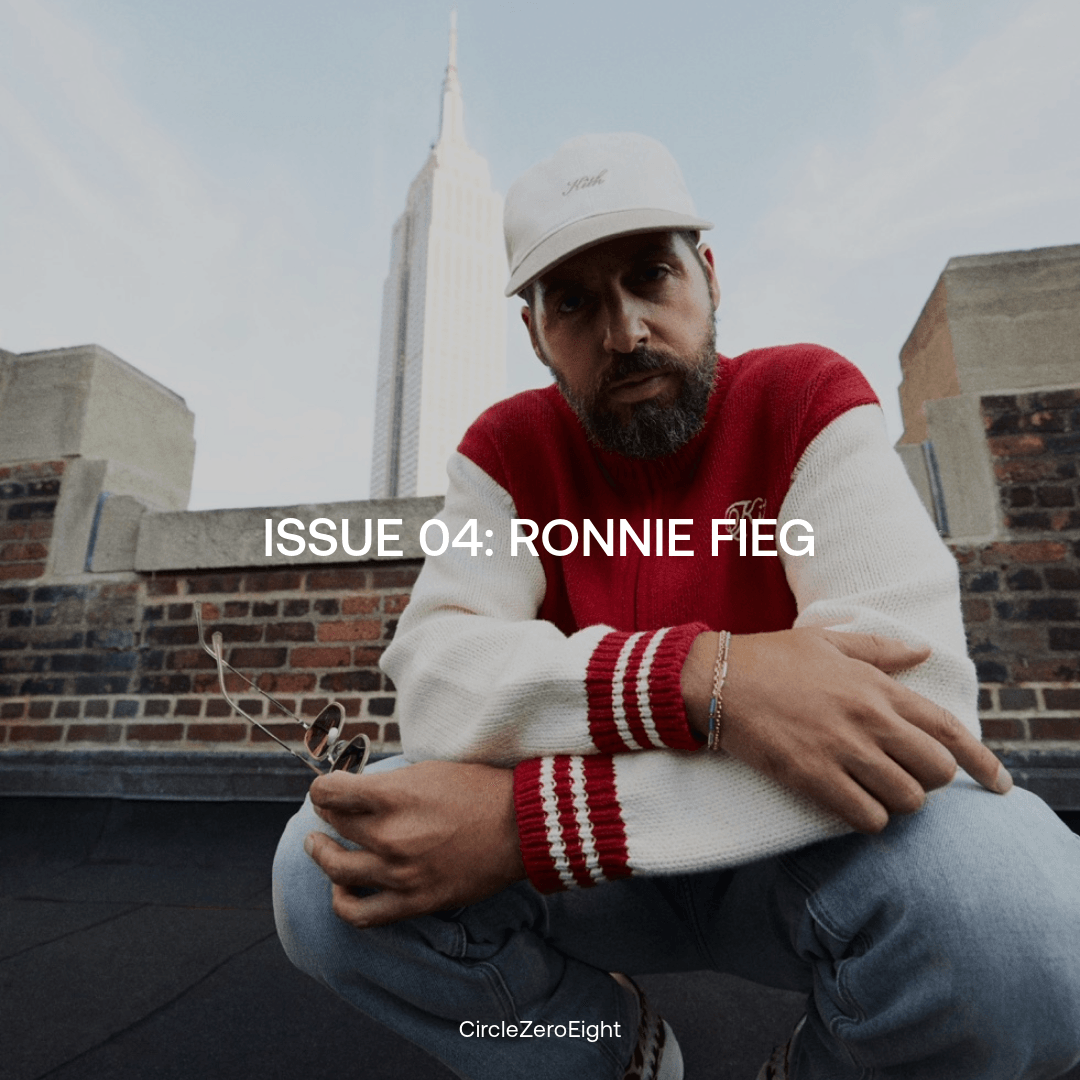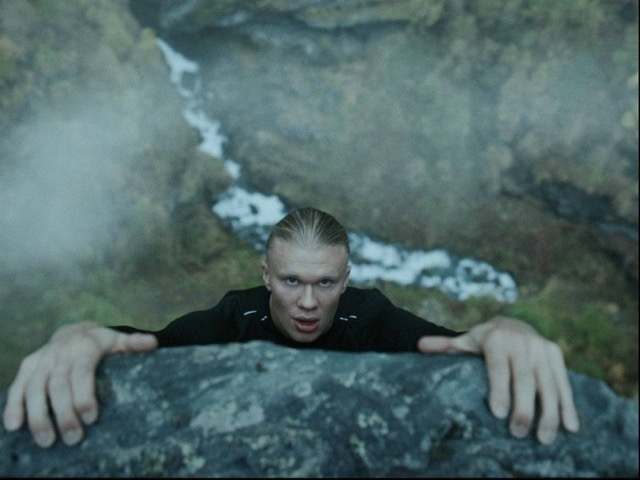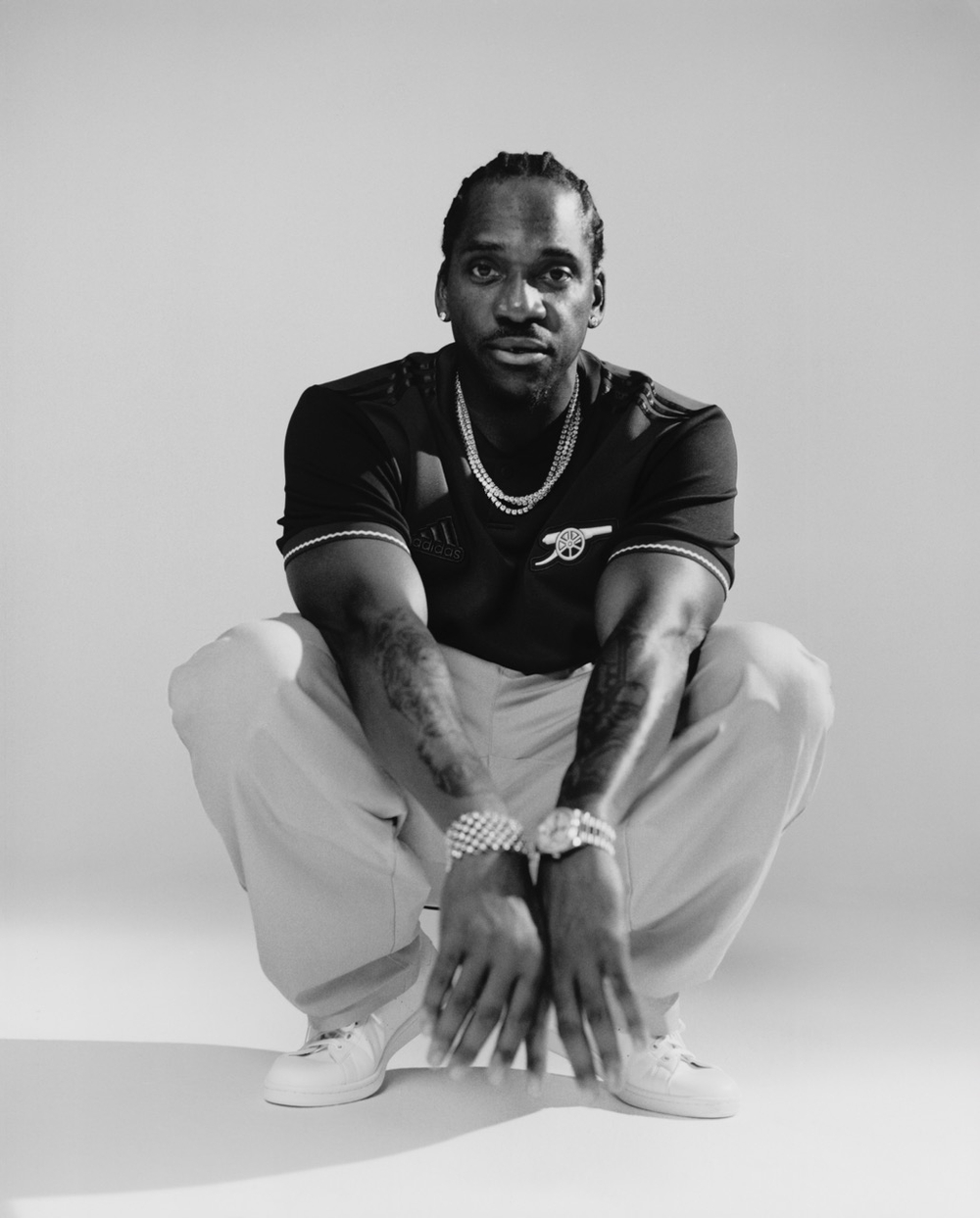
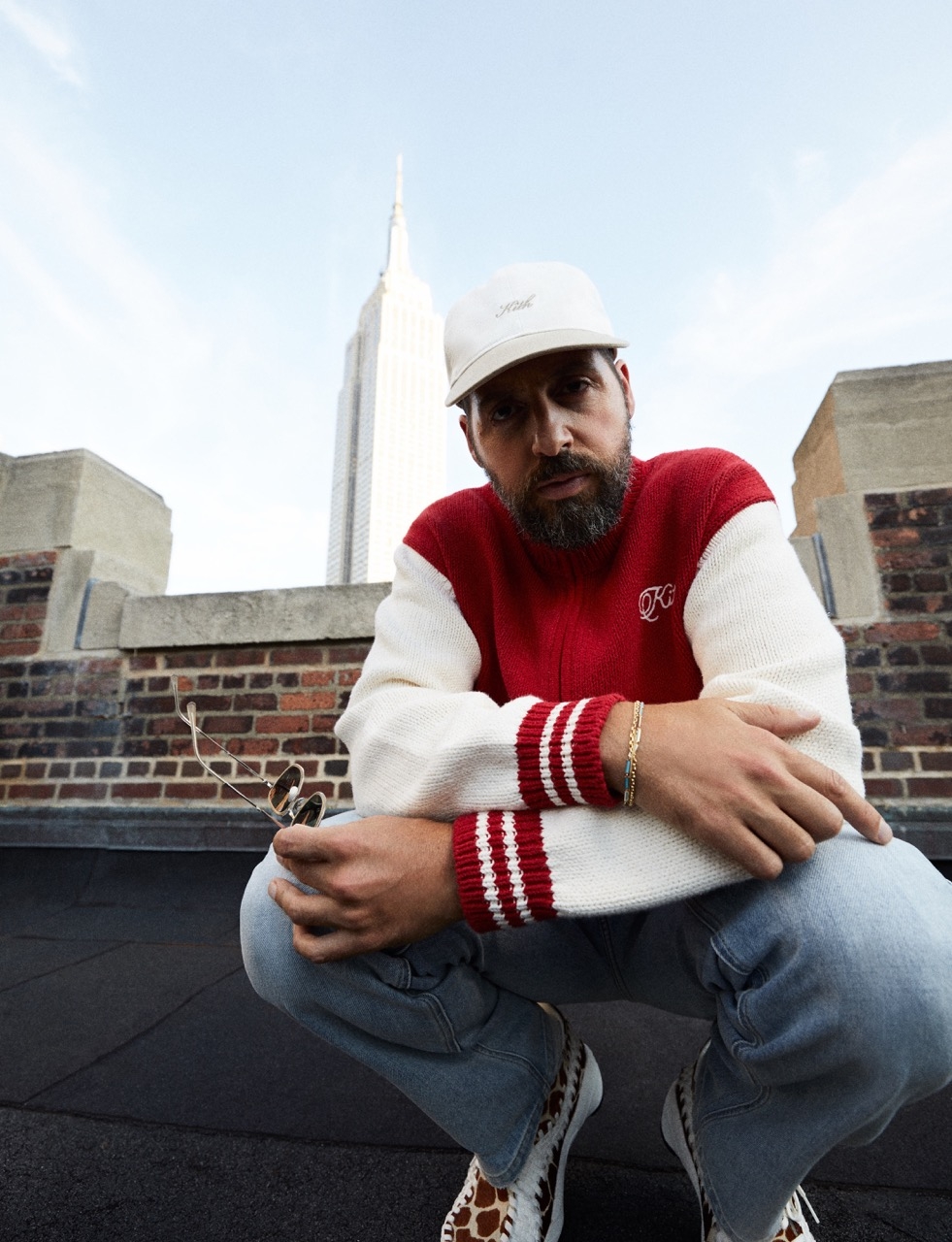
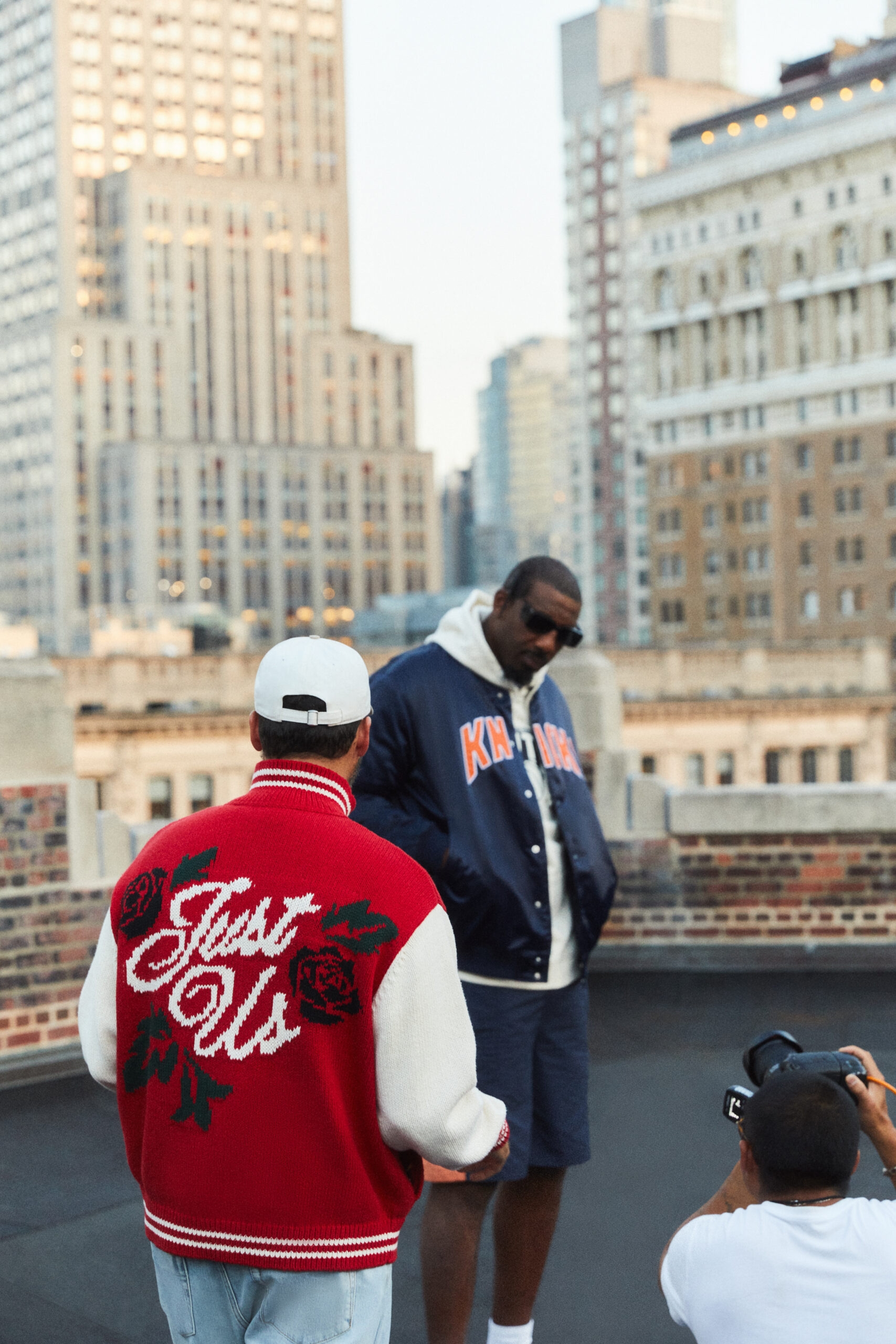
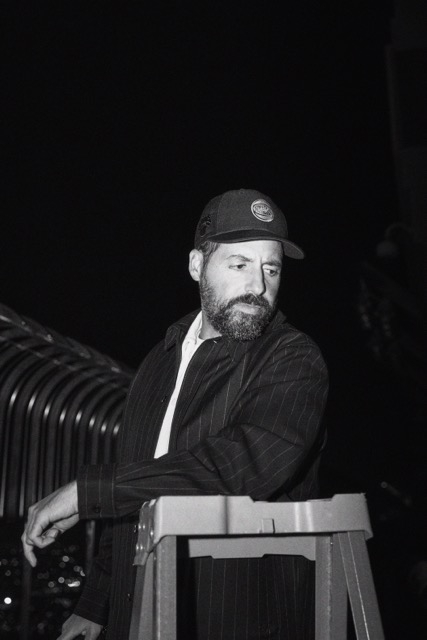

It started with a towel. I’m chatting on a pallid autumn morning with Ronnie Fieg, the creative mastermind behind New York lifestyle phenomenon Kith, and a man for whom sports – and basketball in particular – is everything. Ronnie Fieg knows basketball. For him it is, quite literally, life. Almost 12 months prior, Fieg had been made the New York Knicks’ first-ever creative director, a position which sees him “take on new responsibilities with the team and … focus on building a community around [the Knicks]”, whilst providing the Manhattan outfit with a range of forward-thinking kits designed by his clothing brand. All this started with a towel. “My dad really got me into the Knicks when I was a kid”, he explains over Zoom. The first proper game Fieg ever went to, he animatedly bounds on, was “one of the games in the ‘94 NBA Finals against Houston Rockets at Madison Square Garden”. The Knicks went on to lose that final four games to three, but it was a bit of branded flannel that instilled in Fieg a lifelong obsession with the franchise. “They gave away this small towel that I remember I hung up on my wall. I had it there until I moved out at 18. The Knicks became a huge part of my life, and probably the one thing that has gotten to mean more to me as I’ve gotten older”. It started with a towel, and now Fieg has creative control over the team he’s spent the last thirty-or-so years madly in love with.

I wasn’t meant to conduct this interview. The original journalist pulled out at the last minute, which left me with the unenviable task of prepping for a conversation with one of the coolest names in fashion in the space of a couple of hours. But if there’s one good thing that panic-cramming as many articles about someone as you can gives you, it’s the ability to condense their life and career into just a few sentences. Ronnie Fieg was born in 1982 in the Jamaica neighbourhood of Queens, New York. The story of his meteoric rise is a well known one to any sneakerhead or streetwear aficionado, but the brisk topline is thus: aged 13, he started working in the stockroom of his second cousin’s hip Greenwich Village footwear shop, David Z. – graduating first to the sales floor, then to assistant manager, then to manager, then to assistant buyer, and then to head buyer and designer. Under Fieg, David Z. started collaborating with other brands, and releasing their own footwear. He left in 2010 to concentrate on his nascent brand-cum-clothing store, Kith, and almost immediately found success as the doyen of a certain kind of design cool: more than just streetwear, Fieg’s Kith was selling a lifestyle. Not hypey, not sceney – this was elevated fashion for a community of style-conscious consumers.
Over the next ten years, the brand built a name for itself as the king of collaboration: Versace, Star Wars, Coca-Cola, Moncler, Disney, Nike, The Notorious B.I.G., adidas, BMW, The Godfather – it might seem like it’s easier to list the brands Kith haven’t collaborated with, but there’s a careful selection process behind each link up. “Anything that I’ve ever worked on has always been something that I’ve loved”, Fieg tells me, before adding: “I think that what makes a great collaboration is when two parties come together and make a product that couldn’t be made with one party by themselves”. The collaboration is commonplace in the world of high end fashion. It’s a way of cementing a brand’s design codes; of keeping things fresh and exciting outside the traditional biannual fashion calendar, and of positioning it in a market or sphere that might not be familiar with its original fans. H&M and Karl Lagerfeld? Outré. Miu Miu x New Balance? Never would have seen that coming. But the Knicks? Everything about Fieg is New York. Everything about The Knicks is New York. It’s yellow cabs; it’s bodega cats; it’s The Low End Theory. It’s a collaboration that just makes sense. How did it all come about?

Back in 2020, the Knicks got in touch with Fieg about designing that season’s City Edition shirt. “It was the first in a series of three black jerseys. At the time I reached out to Nike, and told them what I was doing. That was how I worked on my first project with Nike”, Fieg says. The initial collaboration was well-received, and so when the franchise decided to look at how best to grow their brand, there was only one person they considered calling. It’s been a year where lots has gone on behind the scenes, as Fieg worked on the first collection as creative director, which drops November 2023. “I think my involvement in the Knicks will show the most in this upcoming season”, the designer continued. Now it’s not just about making attractive, sellable shirts for the team, but about “the branding and the mood across all channels; the photography – what the team feels and looks like”. If the role of a creative director is a slightly unusual one in the world of basketball, Fieg doesn’t seem phased: “Everything that I take on I give my all, and this has been an incredible opportunity for me, but I feel like the Knicks will benefit from being able to have consistency across that area of their brand”.

Building brands – and building worlds – is what the New York native does best. He knows that to turn a brand into a phenomenon, there has to be an emotional connection between brand and consumer, not unlike that of a sports team and a fan. They queue around the block for Kith’s weekly Monday drops. They queue around the block for a chance to see the Knicks. “For me, it’s like the rich heritage of the Knicks and the rich heritage and the history of New York are linked”, he says. “And that’s why I feel like I’m so emotionally connected to the team: they’re very symbolic of what the city means to me”. In the 1990s, as Fieg was fighting his way up through the world of footwear, the Knicks were fighting their way through the NBA. Under a succession of coaches – Pat Riley, Don Nelson, Jeff Van Gundy – their style was aggressive, and thrilling, and unorthodox. “The way the Knicks played in the ‘90s, with the grit and the hustle – it was me working as hard as I did, versus how hard the Knicks were working”, Fieg elaborated, before pausing. “Like, I didn’t think about it then. But now, I’m sure. What made them very special as a team is this New York hunger”. No one could deny that Fieg also shares that New York hunger. The emotional connection – the sense of coming of age together – is there between the two.

Kith utilise the emotional in their branding, and as a result have developed an incredibly loyal and large following with fans all over the world. Make people feel something, and they will keep coming back to you: “I think it’s very important to be as good a storyteller as a product maker. I think both play a major role in people feeling something for the product that they buy”. Kith has, he notes, “become really good at both”, which is evident in the fanatical way people react to virtually everything the brand puts out, whether it’s a collection styled by an unexpected model (both Bryan Cranston and Steve Buscemi have featured in recent campaigns) or Kith Treats, the ice cream, cereal, and snack parlour launched in 2015 and now available across 13 different locations worldwide.
Kith’s first international store was in London, deep in the glitzy depths of Selfridges. It remains the lifestyle brand’s only store in England, which is surprising given both its success on these shores and the fact that you could quite easily picture a Kith nestled in amongst the vibe merchants and Blue Posts botherers of Soho. But Fieg loves London, even if he hasn’t spent quite as much time there as he’d have liked to. “I know that the street culture has a lot more to offer than what I’ve seen”, he tells me. He’s usually in the city for “a couple of days” at most, travelling through from Paris, or Tokyo (“Every time I come back from Tokyo, I think I’m a different person”), or Milan. But what has really caught his eye about English culture is football. Specifically, football fandom. “I really do love the football culture”, he tells me as we near the end of the interview. “Not only in London, but in Europe in general. I have many, many friends that are huge football fans, and I love what that does – I feel like it creates a unity within the cities in Europe”. Although football is something that’s always been part of Fieg’s life – his father is a big football fan, and during World Cups “it becomes a family event, where we sit down and watch the matches” – the sport is something that he, by his own admission, is only just “taking a bit more seriously and starting to get into more”. Might we see a Kith foray into football soon? “I am working on something currently. It’s going to be for a project for 2025 that I’m very excited about, but I can’t speak too much about it”. Watch this space.

As we start to wrap up an illuminating chat, I ask Fieg what inspires him away from the world of sports. What keeps him fresh after nearly 30 years in the game; after all those collaborations? He answers without hesitation: “Travelling. I feel like every trip has changed me. I love travelling, I love culture, and I love learning”. What’s clear over the twenty minutes or so we spend video calling is just how inquisitive Fieg is, and how on top of everything he is. He fit models all the products that Kith put out. He works on the designs; the branding. He follows the Mets, the Rangers, and the Giants (who Kith have, obviously, recently collaborated with). And now he’s creative director at his beloved New York Knicks. And to think, it all started with a towel.
